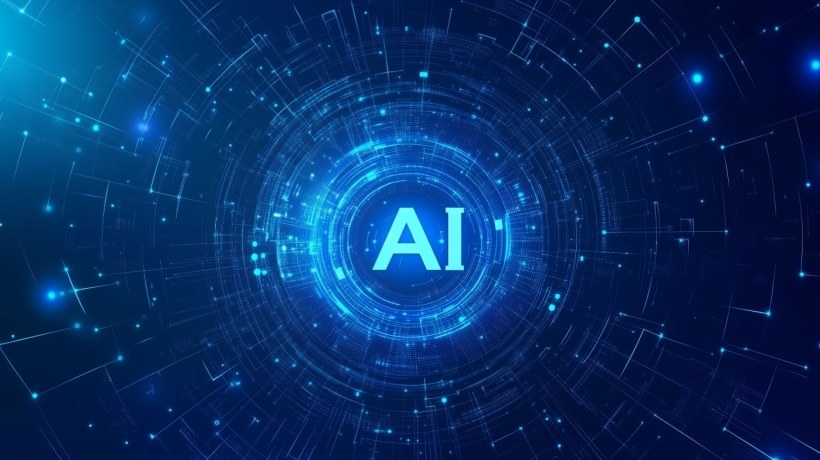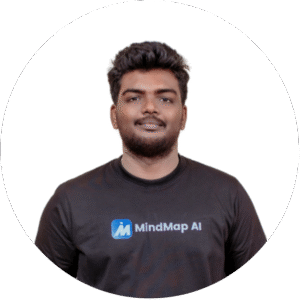Training English Skills: Invention, AI And Personalized Learning
Personalized Learning
Personalized learning is a popular buzzword but every company uses its own definition of this concept. iTutorGroup, the largest English learning institution in the world, on their website, writes, “personalized learning is used to match the right student with the right teaching consultant and digital content which ultimately increases student’s learning performance and progress”[1].
Large corporations often use the newest marketing tools but obsolete teaching methods which historically failed; so we need to elucidate: what do the right teaching consultant and the right digital content actually mean? Teaching requirements are the same for each consultant: TESOL/TEFL certification. Therefore, this promise of the right teaching consultant does not contain much substance. The right digital content is also questionable because iTutorGroup offers to memorize vocabulary lists and phrases provided by online teachers outside of authentic context. Although the teachers are asked to minimize their speaking time and set up time for students to speak more in a group class, conversation in a class with other students who also don’t speak fluent English has very little merit and should be replaced with a new approach that allows all students in a class to use authentic material recorded by native speakers and speak simultaneously with the recording.
In my opinion, personalized learning is a great idea but the success of its implementation depends on the incorporated methodology of teaching. Let me remind you of a mathematical law: if you multiply a very large number by zero, you will get zero irrespective how large that number is. Similarly, if personalized learning incorporates obsolete teaching methodology, it can’t be successful. No other gimmick, like a proprietary algorithm for keeping track of each student in the progress of their learning process, could resolve the current situation when large corporations are selling the teaching time without any guarantee of successful results.
Another point is that the simple fact of having all kind of data on individual students stored in databases doesn’t mean you have a gold mine. If the students followed the obsolete methodology of learning, the databases created would be obsolete as well.
To become successful, personalized learning must incorporate a new efficient method of training English skills. I would like to remind you about two concepts, introduced by Nobel Prize winner Daniel Kahneman, who writes in his book “Thinking, Fast and Slow” that we think slow and fast because we have two different systems of the mind.
System 1 operates automatically and quickly, with little or no effort and no sense of voluntary or conscious control. System 1 characterizes the subconscious activity of the brain. System 2 allocates attention to the mental activity directed toward a particular goal and therefore is slow. System 2 characterizes the conscious activity of the brain.
Students study English as a Foreign Language for years because they want to speak fluently; however, they face difficulties because they employ rote memorization, i.e. System 2, instead of developing fluency through System 1. When we use System 1 for acquiring certain skills the brain during practicing, multiple times the same drill is looking for the patterns which it can perform without conscious effort and with minimal attention, to put it in other words effortlessly. If personalized learning would incorporate learning methodology based on System 1, i.e. on subconscious training English skills rather than on rote memorization, it would open a new era in learning foreign languages.
iTutorGroup poses this question on its website: “What if everything you know about learning a language is wrong?” Unfortunately, the company doesn’t elaborate what is wrong and what is right. iTutorGroup has 180 million customers; however, the number of customers does not validate the effectiveness of the website for learning languages. For example, Duolingo currently has more than 300 million users. I agree with Dr. Katie Nielson who wrote on Voxy blog: “Duolingo is a tragic combination of two approaches (game and translation) that just will not work”[2]. Similarly, personalized learning based on the obsolete conversational approach to learning English used by iTutorGroup will not be as effective as System 1 self-training in which each student is reading the original digital context, listening to the recording made by native speakers and speaking simultaneously.
In order for personalized learning to be effective, we should incorporate the new methodology of subconscious training English skills and demonstrate the following features:
- All students have access to a mobile application that allows them to train all English skills (reading, listening and speaking) simultaneously 24/7.
- All students have the option of creating their own lessons using the mobile application and applying simultaneous repetition to the lessons reflecting their own interests or vocational needs.
- Support in the native language is included in the mobile application to ensure stress-free self-training. Support is organized in such a way that it precludes cross-translation that is the main barrier in acquiring fluency in English.
- A new type of self-testing of active vocabulary is included in the mobile application that measures a student’s ability to speak automatically. This indirect feedback is more efficient than discouraging direct feedback based on the comparison of pronunciation or grammatical errors.
- Subconscious training of English skills is ensured by using reading, listening and speaking simultaneously when attention is fully occupied by performing three actions and automatically turns on the System 1.
Artificial Intelligence
Artificial Intelligence is the tool used to enhance Personalized Learning. Among many definitions of Artificial Intelligence (AI) which are known, I prefer the AI definition given by Oxford Dictionary: “The theory and development of computer systems able to perform tasks normally requiring human intelligence, such as visual perception, speech recognition, decision-making, and translation between languages.”
It is very hard to predict the future of AI because few people are capable to do time travel and see the final AI achievements. But thinking that AI is built by human intelligence and therefore could not become antihuman is wishful thinking.
AI divides people largely into two camps:
- The alarmist corner believes our technical advances risk the extermination of humanity when singularity would be achieved, i.e. when AI cognitive capacity will become far beyond that possible for human beings.
- The opposing side cites the victories AI has already won in health care, transportation, and daily-life conveniences. This side doesn’t believe that human intelligence could be surpassed by AI.
While 2018 was the year of AI hype, I would not join any camp and will limit my consideration to implementing AI in language acquisition. iTutorGroup announced on the website that it “hired Sophia as the first-ever AI tutor and invited her to explore the new era of online education together. AI in education means personalized learning”[3].
In my understanding, Sophia is a closed AI robot with no option of new input and can provide an output only according to the wired algorithm. If you would observe the photo of Sophia, you may notice that she is version #6 and could do only what the robot was programmed to do. What Sophia could not do for sure is to make discoveries that could be patented.
Without changing the methodology of learning by introducing the patented solution, any decision made by AI will not have a great impact on the success rate of adults learning English. It is also questionable how the Sophia robot could communicate with millions of learners. Don’t confuse an AI algorithm that can be used by millions of users simultaneously with an AI robot that has a hard-wired AI algorithm and a rather limited number of inputs and outputs.
Yann LeCun, Chief AI Scientist at Facebook, in his post, writes that Hanson, the creator of Sophia, gives puppet shows which “reveal the fact that many people are being deceived into thinking that this (mechanically sophisticated) animatronic puppet is intelligent. It's not. It has no feelings, no opinions, and zero understanding of what it says. It's not hurt. It's a puppet.”
Hanson believes that he will be able to create an AI robot that would have emotions and the positive belief system characteristic to human beings. However, most AI experts believe that in his interview at the UN, where he stated that he plans to create a robot with emotions, Hanson followed wishful thinking.
The question is what should prevail: the human intelligence or artificial intelligence? I strongly believe that ultimate decision power should be given exclusively to the human intelligence, whereas AI is given the power of processing large scientifically collected databases and finding the trends or to produce answers based on the encyclopedia of knowledge.
Only human beings have access to universal consciousness; AI doesn’t have a soul, empathy or access to the universal consciousness. AI works within a narrow domain, and it tends to be applied to specific areas, but the term has become very widely used for anything that includes some kind of decision-making process performed by computers.
Although AI is capable to do the automated evaluation of written and spoken text and to provide immediate feedback to learners, it remains questionable if correcting errors in pronunciation, grammar or sentence structure is useful when learning English. Some educators think that error corrections are creating stress and should be avoided. I agree with the statement on the Glossika website: if your pronunciation tutor is only telling you where you're going wrong, you're not going to improve.
The belief that the students can learn from error correction is wrong because the errors are produced automatically, and they would be reproduced until the learner improves their English skills by subconscious training when he or she can speak automatically without conscious control. The correction of pronunciation and grammar errors is counterproductive because it creates stress and it automatically brings the learner into System 2. I believe that giving learners a large volume of feedback based on error correction should be critically re-evaluated with the account of new information about subconscious training English skills.
The current type of AI feedback should be replaced by the new type of testing of active vocabulary and fluency and giving indirect stress-free feedback. Let’s consider one example. Imagine your student said: “I am in a bad mood because I could not answer some questions on my teacher.” An AI algorithm can easily correct this sentence; what it can’t do is to determine that speech belongs to System 1 when the mind works fast with a rather limited conscious input. When we converse in our native language we speak automatically using associations and collocations which are produced automatically in one breath. To speak fluently in a foreign language, we need to practice collocations until they can be produced automatically in one breath.
Imagine that instead of correcting the above sentence, the AI algorithm will request the student to speak simultaneously: “I am in a good mood since I was able to answer all my teacher’s questions.” Repeat it a few times with increasing speed, so it sounds like naturally fast speech. AI may add an explanation: while practicing simultaneous repetition of sentences with increasing speed until they sound natural, the learner’s brain acquires word chunks (linguists call them collocations) which usually go together. Later, the learner will be able to use these word chunks by association in similar situations. Then, AI may continue the story by asking the student to speak simultaneously: “If you are in a bad mood, don’t blame yourself. Go to a friend and give him a nice compliment. More likely than not, he will return your compliment, and you will feel much better. Simple and effective.” AI is not designed to replace the instructor, but to help him to interact with each student irrespective of the number of students in the class. Properly designed AI allows students to create new lessons using authentic material available online and recorded by the native speakers.
AI has great potential to provide speaking drills for adult learners according to their current level of English skills or vocational needs or interests. However, be aware that the usage of a synthetic voice of AI robot should be limited rather to instructions and recommendations, whereas most lessons and drills should be recorded by native speakers because the emotional component of a human voice is mandatory for subconscious training of correct pronunciation. The lessons offered by AI to adult learners should be based on authentic material and recorded by native speakers.
Invention Vs. Innovation
The invention refers to the creation of new technology, material, application or device which was unknown and never described or used before; usually, the invention is protected by patent(s). The media prefer the word innovation and use it ten times more often than invention. It is mind-boggling that innovation is considered by the media as a synonym of the invention, although, there is a huge difference between invention and innovation. Innovation is often used by media for describing minor improvements or making insignificant changes to the existing technology or the process. Even small cosmetic changes to the process of technology are often called innovations. Media should have a clear understanding that life-changing discoveries and inventions are NOT synonyms to innovation.
Personalized learning and AI in language learning are innovations (not inventions!) implemented by a few companies which have achieved rather limited progress because they were applied to the traditional methods of learning a foreign language. If personalized learning and AI were combined with the invention of subconscious training English skills, the language companies would demonstrate unsurpassed results and give the learners a written guarantee of becoming fluent in English in less than a year.
References
[1] COO of iTutorGroup, Jerry Huang, Spoke at EdTechXAsia Summit
[2] Why Translation and Games Don’t Work for Language Training (…but Voxy Does)
[3] Online Education Will Become Mainstream -- Meet the World's First AI Tutor









